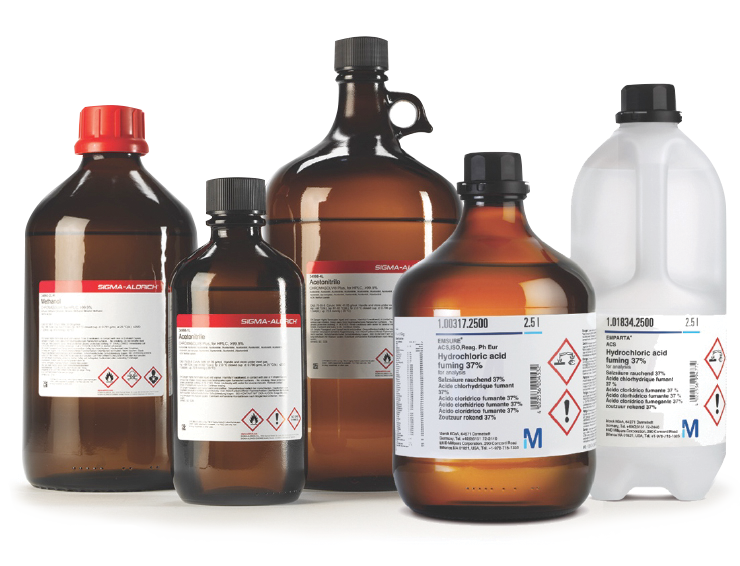New York City Vs New York State Legionella Laws The Definitive Guide
The most common chemical water treatments used by hikers and backpackers for drinking water purification are some form of chlorine, iodine, or oxidizing agents. All of these chemical water purification options require time for the chemicals to do their job. As a general rule you should wait at least 20 minutes after adding the chemical treatment - longer for colder water since the chemicals work more slowly in colder temperatures. Remember to loosen the cap on your water container and slosh some of the treated water onto the threads of the cap and bottle to eliminate contaminates that may be trapped there.
Having to wait is probably the biggest drawback to this type of water purification. With a filter of some type you can arrive at a water source, filter, and drink immediately. With chemical water treatment when you arrive at a water source you first have to fill your container, add the treatment, wait 20 or more minutes - then you can drink. But because it is such a light weight solution to the almost universal problem of water purification, even if it is not used as the primary means of water treatment, carrying some form of chemical water purifier as a back up to a filter is a good idea for extra safety. A good item to carry on day hikes too even when you think you're carrying plenty of water just in case you end up staying out longer or get thirstier than you expected.
Chlorine
Probably the least effective, indoor playground equipment - www.irochemical.com, chlorine is somewhat unstable, adds some taste to the water, and leaves behind some chemical residue now associated with a small cancer risk.

Household Liquid Bleach that contains 5.25% sodium hypo chlorite can be used. Do not use scented, color-safe, or bleaches with added cleaners. Add about 3 to 6 drops of bleach per quart of water, mix thoroughly and allow to sit for approximately 20 minutes.
Iodine
More effective than chlorine, but deteriorates when exposed to sunlight, and leaves behind an unpleasant taste, iodine is another option. It may not be suitable for people with certain types of thyroid conditions. The unpleasant taste of iodine can be countered by adding ascorbic acid (vitamin C) to the treated water, but this should only be added after having waited the recommended amount of time for treatment because it neutralizes the effectiveness of the iodine as well as the taste.
There has been some concern about possible adverse effects from using iodine over prolonged periods, but medical studies including one where prisoners used iodine over a period of several years has not proven this to be the case.
Liquid Tincture of Iodine sold in pharmacies is one possible source. Add several drops per quart of water mix thoroughly and allow to sit for at least 20 minutes. More convenient for hikers are iodine tablets sold specifically for water treatment.
Oxidizers
Possibly the fastest acting chemical water purification option, oxidizers adds the least taste, and produce the least undesirable chemical residues, but they also generally more expensive than chlorine or iodine. This is the type of water treatment used by many municipal city water systems.
Having to wait is probably the biggest drawback to this type of water purification. With a filter of some type you can arrive at a water source, filter, and drink immediately. With chemical water treatment when you arrive at a water source you first have to fill your container, add the treatment, wait 20 or more minutes - then you can drink. But because it is such a light weight solution to the almost universal problem of water purification, even if it is not used as the primary means of water treatment, carrying some form of chemical water purifier as a back up to a filter is a good idea for extra safety. A good item to carry on day hikes too even when you think you're carrying plenty of water just in case you end up staying out longer or get thirstier than you expected.
Chlorine
Probably the least effective, indoor playground equipment - www.irochemical.com, chlorine is somewhat unstable, adds some taste to the water, and leaves behind some chemical residue now associated with a small cancer risk.

Household Liquid Bleach that contains 5.25% sodium hypo chlorite can be used. Do not use scented, color-safe, or bleaches with added cleaners. Add about 3 to 6 drops of bleach per quart of water, mix thoroughly and allow to sit for approximately 20 minutes.
Iodine
More effective than chlorine, but deteriorates when exposed to sunlight, and leaves behind an unpleasant taste, iodine is another option. It may not be suitable for people with certain types of thyroid conditions. The unpleasant taste of iodine can be countered by adding ascorbic acid (vitamin C) to the treated water, but this should only be added after having waited the recommended amount of time for treatment because it neutralizes the effectiveness of the iodine as well as the taste.
There has been some concern about possible adverse effects from using iodine over prolonged periods, but medical studies including one where prisoners used iodine over a period of several years has not proven this to be the case.
Liquid Tincture of Iodine sold in pharmacies is one possible source. Add several drops per quart of water mix thoroughly and allow to sit for at least 20 minutes. More convenient for hikers are iodine tablets sold specifically for water treatment.
Oxidizers
Possibly the fastest acting chemical water purification option, oxidizers adds the least taste, and produce the least undesirable chemical residues, but they also generally more expensive than chlorine or iodine. This is the type of water treatment used by many municipal city water systems.
Created at 2019-07-25
Back to posts
This post has no comments - be the first one!
UNDER MAINTENANCE